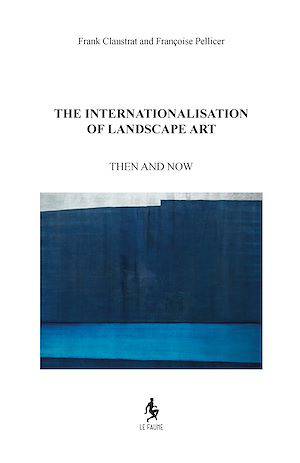
- Retrait gratuit dans votre magasin Club
- 7.000.000 titres dans notre catalogue
- Payer en toute sécurité
- Toujours un magasin près de chez vous
- Retrait gratuit dans votre magasin Club
- 7.000.0000 titres dans notre catalogue
- Payer en toute sécurité
- Toujours un magasin près de chez vous
The Internationalisation of Landscape Art EBOOK
Then and now
Frank Claustrat, Françoise Pellicer
Ebook | Anglais
17,99 €
+ 17 points
Description
This collective interdisciplinary work on the landscape art from prehistory to the present day is made up of fourteen essays presented in three thematic sections (« The Human Being and his Environment », « The Experience of the Imaginary », « Spaces and Artistic Confrontations »). It brings together contributions from thirteen international researchers and specialists, to decipher what was at stake in debates old and new, and analysing the mass of information available today regarding the polymorphic idea of the landscape. It aims to discern the approaches and the works, the concepts and the periods, the disciplines and the countries, the subjects and the designs, with the goal of presenting new insights. The chronological approach on which this is based hopefully brings an understanding of the extent of successive changes that, before and after Christianisation, affected the perception, the appropriation, the experience of the everyday and the representation of the landscape. The fourteen essays are organised by subject and by hierarchy allowing an understanding of their relationships to each other and to an enduring continuity. Each of them presents a study based on a specific case, chosen for its particular significance, and is completed with bibliographical notes to enhance the reader’s understanding.
Under the direction of Frank Claustrat (Associate Professor in Contemporary Art History, Paul-Valéry Montpellier III University) and Françoise Pellicer (Associate Professor in Modern Art History, Paul-Valéry Montpellier III University), members of the research unit CRISES (Montpellier, France).
Book published with the support of the Paul-Valéry Montpellier III University, the research unit CRISES, and the Hartung-Bergman Foundation, Antibes (France).
Under the direction of Frank Claustrat (Associate Professor in Contemporary Art History, Paul-Valéry Montpellier III University) and Françoise Pellicer (Associate Professor in Modern Art History, Paul-Valéry Montpellier III University), members of the research unit CRISES (Montpellier, France).
Book published with the support of the Paul-Valéry Montpellier III University, the research unit CRISES, and the Hartung-Bergman Foundation, Antibes (France).
Spécifications
Parties prenantes
- Auteur(s) :
- Editeur:
Contenu
- Nombre de pages :
- 258
- Langue:
- Anglais
Caractéristiques
- EAN:
- 9782492366024
- Date de parution :
- 29-12-20
- Format:
- Ebook
- Protection digitale:
- Adobe DRM
- Format numérique:
- ePub

Les avis
Nous publions uniquement les avis qui respectent les conditions requises. Consultez nos conditions pour les avis.






